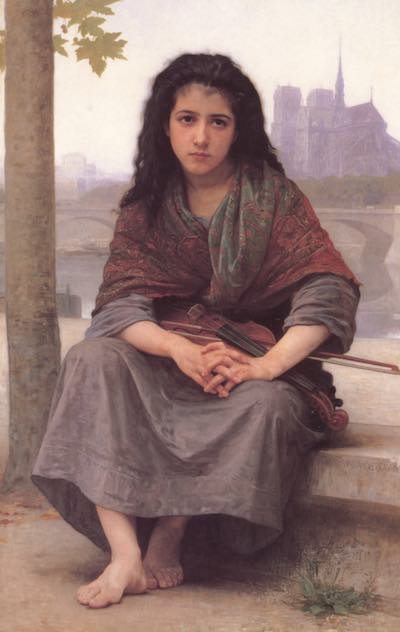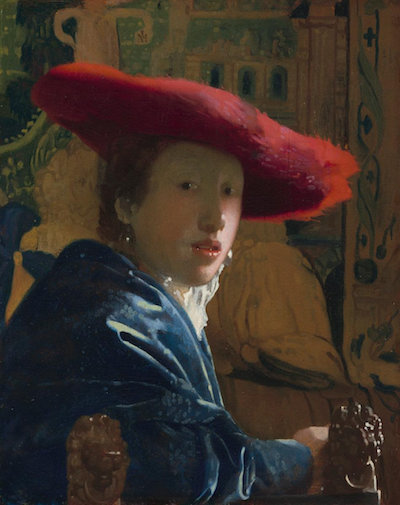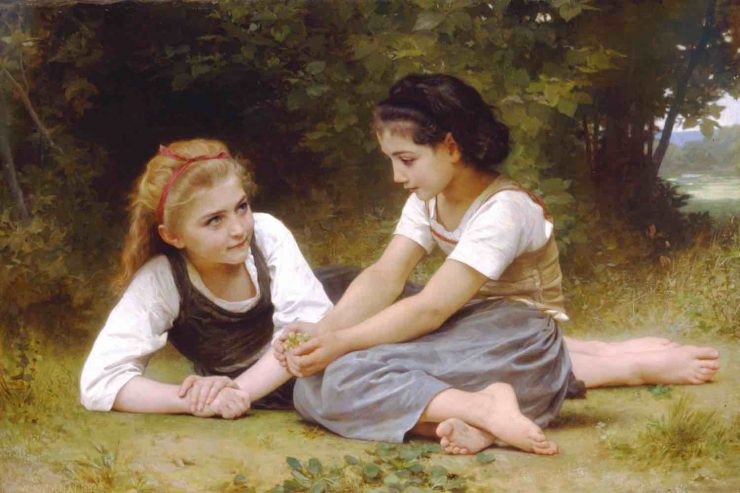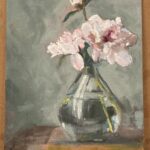(Get free painting tips and plein air painting techniques sent straight to your inbox or on my social media.)
Definition
Glazing techniques in oil painting are when you apply a transparent layer of paint over another dried layer of paint. It is similar to placing a sheet of colored transparent acetate over a monochrome photograph. When glazing in oils you apply multiple layers and each layer affects the final oil painting. The process is the same when glazing in acrylics.
What are the terms used in glazing?
Here are some of the terms used when discussing glazing techniques in oil painting.
glaze – the transparent layer of paint you apply to an underpainting
lake pigment – a pigment made by precipitating a dye with an inert binder, or “mordant”, usually a metallic salt. Unlike vermilion, ultramarine, and other pigments made from ground minerals, lake pigments are organic. Manufacturers and suppliers to artists and industry frequently omit the lake designation in the name. Many lake pigments are fugitive because the dyes involved are not lightfast. Red lakes were particularly important in Renaissance and Baroque paintings; they were often used as translucent glazes to portray the colors of rich fabrics and draperies.
medium – an oil or some other substance that is used to thin oil paint so that you can brush it thinly over dried paint
transparent pigment – a pigment that lets light shine through
underpainting – the dried layer below
When are glazing techniques in oil painting used?
You can use glazing as either as a primary technique for oil painting or in order to correct a painting.
When using it as a primary method of painting, you slowly build up a painting using multiple glazes on top of each other. This technique was used for example by painters such as William-Adolphe Bouguereau.

Alternatively you can use it as a technique to adjust the color of part of a painting that you painted using another technique such as alla prima painting.
Which masters used glazing techniques in oil painting?
In the late 19th century artists such as Bougueroux used the technique extensively in their work. Classical realist painters today use this technique.

Vermeer used glazing only in a part of his painting, not everywhere. He modeled the red hat, according to common practice for painting saturated red objects at that time:
1First he painted it with shades of pure vermilion and black. 2On top of that he glazed the lighter areas with a thin layer of pure madder lake. 3Finally he darkened the shadowed areas with a thicker glaze of madder lake and, possibly, some black or natural ultramarine.What are the advantages of glazing?
- luminosity – Glazing creates a unique “shine through,” luminous stained-glass luminous effect that you cannot get by directly mixing the paint. In the past artists used the glazing painting technique because they did not have the brilliant colors that are available today. For example, high saturation purples, greens and oranges were either rare and unstable. To create purple they glazed blue over a reddish underpainting or vice versa.
- correction – You can use a glaze to correct a part of a painting.
What are the disadvantages of glazing techniques in oil painting?
- slow – Since you have to let the underpainting dry before you can apply a glaze, this method of painting takes a long time.
- limited to studio – It is not a suitable method when painting plein air, or the alla prima method of painting. As a primary method of painting, it is only suitable for studio work.
- unpredictable – It is very difficult to anticipate the final effect the glaze will have on the finished painting. It is difficult to determine accurately how thick or thin the glaze-paint should be. If your glaze is too thick you can alter a paint layer’s color too much.
- fixed – After you have glazed over an underpainting, you cannot alter the underpainting.
- attracts attention – Due to its transparency, a glaze produces an optical depth that attracts the viewer’s eye more than the surrounding layers of opaque paint. You might not want to attract attention to that area.
- photographic – The method tends to produce a photographic effect, and so loses a lot of the interesting quality of brushwork that enhances a painting and makes it more engaging to look at.
How to glaze an oil or acrylic painting
1Paint an underlayer in monochrome paint. You can use a grisaille, in which you paint in shades of grey, or use other colors such as green (called a Verdaccio) or brown (called a Bistre). Caravaggio often used brown glazes. 2Let the underlayer dry completely. If you do not let it dry, the glaze will mix with the underlayer and you will lose the transparent effect. 3Add an oil medium to the paint you want to do the glaze with. This makes the paint easier to brush on top of the underpainting. One useful medium is Liquin from the Winsor and Newton company. 4Paint a layer of paint in over the underlayer using the mixture you made in the previous step. Typically you will use a soft bristled brush to paint the glaze.Tips
- Use only inherently transparent pigments.
Cautions
- If you glaze with neutral grays or dull colors, you will gain nothing.
- Do not use glazes everywhere. Use them just on the specific parts of the composition where you want to change the color.
- Glazes attract dust because of their high oil content.
Pigments used for glazing
In the past, artists mainly used these pigments for glazing in oils: madder lake, carmine, natural ultramarine, verdigris, various organic yellow lakes and indigo. You can use any transparent pigment for glazing.
Technical aspects of glazing
When glazing in oils or acrylics, you do not physically mix the glaze and the underpainting, but optically mix them.
Paint is likely to become literally transparent with the years–because of the increase of the refractive index of linseed oil film with age or for other reasons–the general effect of transparency exists in all old paints. The lessons that careful painters have learned from this are several: you must plan the multiple layers of paint with this effect in mind; that when you conceal or obliterate the underpainting, you must make the top sufficiently opaque for the purpose; scrape away distinctly dark or outstanding areas before overpainting them with paler tones; and take down disturbing textures and brushstrokes, using a sharp blade if the paint is too hard to be cut with a palette knife. The underpainting and the ground will always have some degree of influence on the final painting except when you apply the paint in an extremely thick impasto layer.
Ralph Mayer. The Painter’s Craft: An Introduction to Artist’s Methods and Materials.
For More Information
Thank You
Thank you for taking the time to read this article. I hope you find it useful. If you would like to get free painting tips by email, please sign up for my free tips newsletter.
If you are interested in a structured approach for learning how to paint, take a look at my online painting classes.
Happy painting!
Barry John Raybould
Virtual Art Academy

























[…] top layer will be slower than that of the lower, less oily layers hidden within the layers. Adding oil glazes to an artwork adds a new level of challenge to the artist. Painters used to mix paint by hand until […]